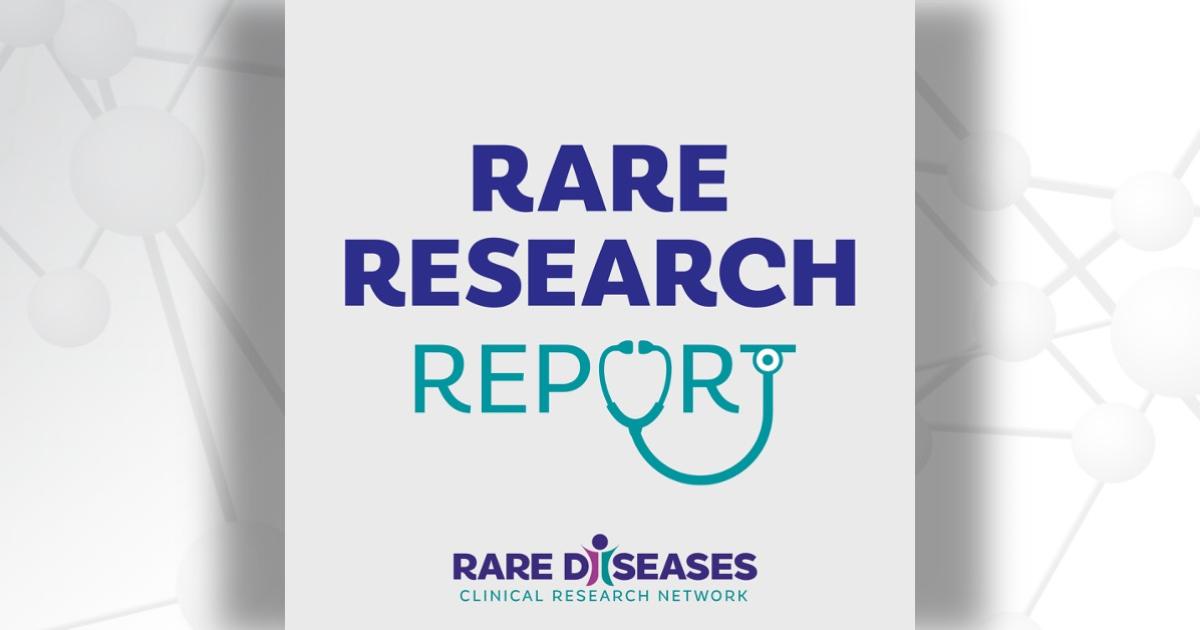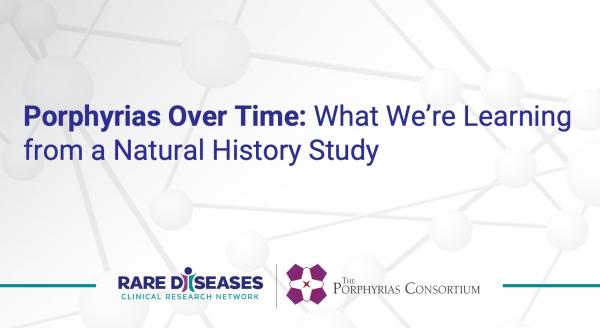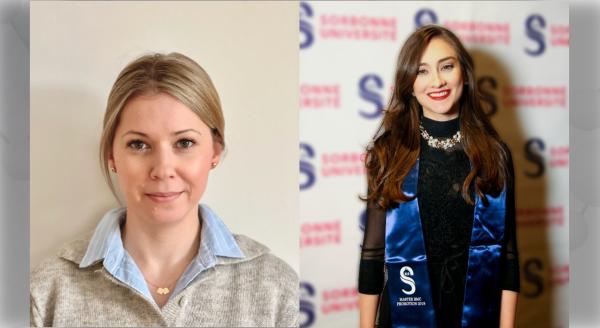Each month, we share summaries of recent Rare Diseases Clinical Research Network (RDCRN) grant-funded publications. Catch up on the latest RDCRN research below.
Jump to:
- Frontiers in Congenital Disorders of Glycosylation Consortium (FCDGC)
- Genetic Disorders of Mucociliary Clearance Consortium (GDMCC)
- Global Leukodystrophy Initiative Clinical Trials Network (GLIA-CTN)
- Inherited Neuropathy Consortium (INC)
- Myasthenia Gravis Rare Disease Network (MGNet)
- Nephrotic Syndrome Study Network (NEPTUNE)
Listen to these summaries on the Rare Research Report podcast.
Frontiers in Congenital Disorders of Glycosylation Consortium (FCDGC)
Exploring the Natural History of Congenital Disorders of Glycosylation
Congenital disorders of glycosylation (CDG) are a large group of rare, inherited disorders that affect a complex process in the body called glycosylation. Because the many different types of CDG are rare and vary widely, not much is known about the progression of this group of disorders.
In this study, researchers are exploring the natural history of CDG. The team is gathering data from 280 individuals with CDG across 9 clinical sites. Now at year 5 of the study, the team is sharing an overview of participant characteristics.
Initial findings include insights on liver function, patient-reported outcomes, and neurological features, as well as information on ultra-rare genetic causes of CDG. Authors note that this study serves as an important resource to build future research studies, improve clinical care, and prepare for clinical trial readiness.
Lam C, Scaglia F, Berry GT, Larson A, Sarafoglou K, Andersson HC, Sklirou E, Tan QKG, Starosta RT, Sadek M, Wolfe L, Horikoshi S, Ali M, Barone R, Campbell T, Chang IJ, Coles K, Cook E, Eklund EA, Engelhardt NM, Freeman M, Friedman J, Fu DYT, Botzo G, Rawls B, Hernandez C, Johnsen C, Keller K, Kramer S, Kuschel B, Leshinski A, Martinez-Duncker I, Mazza GL, Mercimek-Andrews S, Miller BS, Muthusamy K, Neira J, Patterson MC, Pogorelc N, Powers LN, Ramey E, Reinhart M, Squire A, Thies J, Vockley J, Vreugdenhil H, Witters P, Youbi M, Zeighami A, Zemet R, Edmondson AC, Morava E. Frontiers in congenital disorders of glycosylation consortium, a cross-sectional study report at year 5 of 280 individuals in the natural history cohort. Mol Genet Metab. 2024 Jun 6;142(4):108509. doi: 10.1016/j.ymgme.2024.108509. Epub ahead of print. PMID: 38959600.
Genetic Disorders of Mucociliary Clearance Consortium (GDMCC)
Identifying a New Genetic Cause in Unsolved Cases of Bronchiectasis
Bronchiectasis is a progressive disorder in which the bronchi (air passages within the lungs that diverge from the windpipe) are permanently dilated and irreversibly scarred. Chronic respiratory disorders—including cystic fibrosis, primary ciliary dyskinesia, and primary immunodeficiency disorders—characterized by bronchiectasis have underlying genetic or environmental causes. However, most cases of bronchiectasis have unknown causes.
In this study, researchers identified a new genetic cause in unsolved cases of bronchiectasis. The team performed next-generation sequencing to explore possible genetic defects in individuals with chronic respiratory symptoms who were not suspected to have cystic fibrosis or primary ciliary dyskinesia based on previous genetic testing.
Results revealed disease-causing variants in the WFDC2 gene in 11 individuals presenting with a unique and severe respiratory disorder characterized by bronchiectasis in all lung fields, chronic rhinosinusitis, and lung infection. This new cause of chronic destructive airway disease results from deficiency of the secreted WFDC2 protein. Authors note that the identification of this disease—which can be diagnosed with a commercially available blood test and genetic testing—adds to our understanding of the causes of bronchiectasis and may lead to improved treatment.
Dougherty GW, Ostrowski LE, Nöthe-Menchen T, Raidt J, Schramm A, Olbrich H, Yin W, Sears PR, Dang H, Smith AJ, Beule AG, Hjeij R, Rutjes N, Haarman EG, Maas SM, Ferkol TW, Noone PG, Olivier KN, Bracht DC, Barbry P, Zaragosi LE, Fierville M, Kliesch S, Wohlgemuth K, König J, George S, Loges NT, Ceppe A, Markovetz MR, Luo H, Guo T, Rizk H, Eldesoky T, Dahlke K, Boldt K, Ueffing M, Hill DB, Pang YP, Knowles MR, Zariwala MA, Omran H. Recessively Inherited Deficiency of Secreted WFDC2 (HE4) Causes Nasal Polyposis and Bronchiectasis. Am J Respir Crit Care Med. 2024 Jul 1;210(1):63-76. doi: 10.1164/rccm.202308-1370OC. PMID: 38626355; PMCID: PMC11197063.
Global Leukodystrophy Initiative Clinical Trials Network (GLIA-CTN)
Describing Anesthetic Outcomes of Pediatric Patients with Alexander Disease
Alexander disease is a rare disorder of the nervous system characterized by leukodystrophy, or the destruction of myelin (the fatty coating surrounding nerve fibers). Patients with Alexander disease can experience developmental delay, seizures, difficulty swallowing, vomiting, and sleep apnea. These symptoms can also lead to complications under general anesthesia. However, not much is known about outcomes related to anesthesia for patients with Alexander disease.
In this study, researchers describe anesthetic outcomes of pediatric patients with Alexander disease undergoing magnetic resonance imaging or lumbar puncture. Among 40 patients undergoing 64 procedures, the team reviewed data on patient characteristics, anesthetic techniques, medications, and complications under anesthesia as well as in the following 24 hours.
Results show that participants did not experience significant complications while undergoing general anesthesia or monitored anesthesia care, demonstrating that patients with Alexander disease can safely be anesthetized for low-risk procedures. Authors note that further study is needed to understand the long-term safety outcomes of repeat anesthetic exposures in patients with Alexander disease.
Berger JA, Simpao AF, Dubow SR, McClung HA, Liu GW, Waldman AT, Drum ET. A retrospective observational cohort study of the anesthetic management and outcomes of pediatric patients with Alexander disease undergoing lumbar puncture or magnetic resonance imaging. Paediatr Anaesth. 2024 Aug;34(8):810-817. doi: 10.1111/pan.14937. Epub 2024 May 31. PMID: 38818870; PMCID: PMC11223980.
Neurodevelopmental disorders have a wide range of causes, which can lead to diagnostic challenges. Patients are often subjected to a long course of tests with frequently inconclusive results. Exome sequencing is a comprehensive genetic test that can help evaluate undiagnosed neurodevelopmental disorders. However, these tests may miss rare diagnoses due to technical limitations. While genome sequencing addresses many of these limitations, it is less commonly used due to higher cost and more intense analysis.
In this study, researchers illustrate the diagnostic utility of genome sequencing in pediatric cases of neurodevelopmental disorders following non-diagnostic exome sequencing. The team describes nine cases of individuals presenting with global developmental delay or regression who were diagnosed with genome sequencing after inconclusive exome sequencing tests.
Results show that in these cases, exome sequencing was limited by poor sensitivity for structural variants and non-coding variants, as well as biased coverage of coding regions. Authors note that these findings suggest that individuals presenting with neurodevelopmental disability could benefit from genome sequencing, either as a follow-up or in place of non-diagnostic exome sequencing.
Nomakuchi TT, Teferedegn EY, Li D, Muirhead KJ, Dubbs H, Leonard J, Muraresku C, Sergio E, Arnold K, Pizzino A, Skraban CM, Zackai EH, Wang K, Ganetzky RD, Vanderver AL, Ahrens-Nicklas RC, Bhoj EJK. Utility of genome sequencing in exome-negative pediatric patients with neurodevelopmental phenotypes. Am J Med Genet A. 2024 Jul 19:e63817. doi: 10.1002/ajmg.a.63817. Epub ahead of print. PMID: 39031459.
Inherited Neuropathy Consortium (INC)
Charcot-Marie-Tooth disease type 1A (CMT1A) is the most common form of hereditary neuropathy. Although all cases of CMT1A are caused by duplications of the PMP22 gene, each case can have significant differences in severity, which may result from genetic modifiers.
In this study, researchers analyzed genetic modifiers to characterize severity in patients with CMT1A. The team reviewed clinical examination results from 1,564 patients in a natural history study conducted by the Inherited Neuropathy Consortium (INC). Next, the team identified extreme cases (mild and severe) among these patients.
Results reveal insights on genetic modifiers that have significant effects on the severity and course of CMT1A. Authors note that the metrics used in this study can also improve patient enrollment strategies for future studies.
Xu IRL, Danzi MC, Ruiz A, Raposo J, De Jesus YA, Reilly MM, Cortese A, Shy ME, Scherer SS, Herrmann DN, Fridman V, Baets J, Saporta M, Seyedsadjadi R, Stojkovic T, Claeys KG, Patel P, Feely S, Rebelo AP; Inherited Neuropathy Consortium; Dohrn MF, Züchner S. A study concept of expeditious clinical enrollment for genetic modifier studies in Charcot-Marie-Tooth neuropathy 1A. J Peripher Nerv Syst. 2024 Jun;29(2):202-212. doi: 10.1111/jns.12621. Epub 2024 Apr 5. PMID: 38581130; PMCID: PMC11209807.
Describing a New Subtype of Distal Hereditary Motor Neuropathy Caused by RTN2 Deficiency
Distal hereditary motor neuropathies (dHMNs) are a diverse group of rare neuromuscular disorders characterized by muscle weakness and atrophy. Clinical and genetic overlap among hereditary neurological disorders highlights the potential of a shared molecular cause.
In this study, researchers describe a new subtype of recessive dHMN caused by deficiency of the RTN2 protein. The team used exome, genome, and Sanger sequencing techniques coupled with deep-phenotyping to identify and validate seven new or ultra-rare variants in the RTN2 gene in 14 individuals with dHMN.
Findings reveal that this new subtype shares similarities with two other subtypes of dHMN—SIGMAR1-related disorder and Silver-like syndromes. Authors note that this study provides valuable insights on the clinical spectrum and potential therapeutic strategies for RTN2-related dHMN.
Maroofian R, Sarraf P, O'Brien TJ, Kamel M, Cakar A, Elkhateeb N, Lau T, Patil SJ, Record CJ, Horga A, Essid M, Selim L, Benrhouma H, Ben Younes T, Zifarelli G, Pagnamenta AT, Bauer P, Khundadze M, Mirecki A, Kamel SM, Elmonem MA, Ghayoor Karimiani E, Jamshidi Y, Offiah AC, Rossor AM, Youssef-Turki IB, Hübner CA, Munot P, Reilly MM, Brown AEX, Nagy S, Houlden H. RTN2 deficiency results in an autosomal recessive distal motor neuropathy with lower limb spasticity. Brain. 2024 Jul 5;147(7):2334-2343. doi: 10.1093/brain/awae091. PMID: 38527963; PMCID: PMC11224604.
Myasthenia Gravis Rare Disease Network (MGNet)
Discussing the Current Understanding of Pathophysiology and New Therapies in Myasthenia Gravis
Myasthenia gravis (MG) is a rare neuromuscular disorder that occurs when the body’s immune system attacks the nerve-muscle communication point, causing disabling weakness. Over the past few decades, understanding of MG has progressed significantly, leading to the development of new therapies.
In this review paper, researchers discuss the current understanding of pathophysiology and new therapies in MG. The team covers the various subgroups of MG as well as emerging therapeutic strategies. Authors note that these insights shed light on the evolving landscape of MG treatment and exciting prospects for further research.
Kaminski HJ, Sikorski P, Coronel SI, Kusner LL. Myasthenia gravis: the future is here. J Clin Invest. 2024 Jun 17;134(12):e179742. doi: 10.1172/JCI179742. PMCID: PMC11178544.
Muscle-specific kinase myasthenia gravis (MuSK-MG) is an autoimmune disorder caused by antibodies targeting the muscle-specific kinase (MuSK), causing muscle weakness. Although neurological autoimmunity can potentially increase the risk of cancer, not much is known about cancer rates among patients with MuSK-MG.
In this study, researchers explored the frequency and timing of cancer in patients with MuSK-MG. The team reviewed records of 94 patients, recording information about diagnosis and treatment of associated cancers. In two patients with MuSK-MG onset after cancer diagnosis, researchers performed immunohistochemistry to assess MuSK expression in cancer cells of tumor specimens.
Assessment of tumor specimens revealed strong nuclear expression of the MuSK protein in cancer cells. These findings suggest a new pathway in the formation of tumors as well as a potential therapeutic target. Authors note that this preliminary study needs to be replicated in a much larger cohort of patients to determine if cancers could be a trigger for MuSK MG.
Falso S, Gessi M, Marini S, Benvenuto R, Sabatelli E, D'Amati A, Marini M, Evoli A, Iorio R. Cancer Frequency in MuSK Myasthenia Gravis and Histological Evidence of Paraneoplastic Etiology. Ann Neurol. 2024 Jul 15. doi: 10.1002/ana.27033. Epub ahead of print. PMID: 39007444.
Investigating Autoreactivity to Enhance Evaluation of Therapies for Autoimmune Diseases
Autoimmune diseases are a group of conditions caused by a dysregulated immune system that attacks and damages the body. As autoimmune diseases have become increasingly more common, new therapies have emerged. However, how they specifically alter the immune system is not well understood.
In this study, researchers studied the circulating autoantibody repertoire to further understand the effect of therapies used for autoimmune diseases. Leveraging a custom set of over 730,000 human-derived peptides (short chains of amino acids), the team explored variations in autoantibody profiles across individuals who were treated with different immune-modulating therapies.
Results show that each individual—regardless of disease state—has a distinct and complex set of autoantibodies, which creates a unique immunological footprint researchers call the “autoreactome” that remains surprisingly stable over many years. The team found that therapies targeting B cell maturation antigen (BCMA) greatly altered an individual’s autoreactome, while anti-CD19 and anti-CD20 therapies, which deplete B cells, had minimal effects. Authors note that these findings suggest the potential for BCMA therapy in treating autoantibody diseases that are resistant to current therapies.
Bodansky A, Yu DJ, Rallistan A, Kalaycioglu M, Boonyaratanakornkit J, Green DJ, Gauthier J, Turtle CJ, Zorn K, O'Donovan B, Mandel-Brehm C, Asaki J, Kortbawi H, Kung AF, Rackaityte E, Wang CY, Saxena A, de Dios K, Masi G, Nowak RJ, O'Connor KC, Li H, Diaz VE, Saloner R, Casaletto KB, Gontrum EQ, Chan B, Kramer JH, Wilson MR, Utz PJ, Hill JA, Jackson SW, Anderson MS, DeRisi JL. Unveiling the proteome-wide autoreactome enables enhanced evaluation of emerging CAR T cell therapies in autoimmunity. J Clin Invest. 2024 May 16;134(13):e180012. doi: 10.1172/JCI180012. PMID: 38753445; PMCID: PMC11213466.
Nephrotic Syndrome Study Network (NEPTUNE)
Using an Artificial Intelligence Tool to Improve Digital Pathology Labeling
Histology slides are used to study tissues and organs under a microscope. Increasingly, slides are being digitized into whole slide images, which are sequential images stitched together to create a single high-resolution file. These images can help us discover patterns associated with diagnosis, prognosis, and therapy response. However, in order to reveal these patterns, a large number of objects in the images must be labeled—for example, a single image may contain over 1 million cells.
In this study, researchers used an artificial intelligence tool to improve digital pathology labeling. The team tested the tool in four use cases with objects containing various numbers of cells and cell types. These use cases included renal tubules (small tubes in the kidneys) and glomeruli (small balls of capillaries in the kidneys).
Results show that the tool, PatchSorter, improves label efficiency, allowing the user to leverage deep learning to quickly review and apply labels at a group level. Authors note that these labels are also highly accurate.
Walker C, Talawalla T, Toth R, Ambekar A, Rea K, Chamian O, Fan F, Berezowska S, Rottenberg S, Madabhushi A, Maillard M, Barisoni L, Horlings HM, Janowczyk A. PatchSorter: a high throughput deep learning digital pathology tool for object labeling. NPJ Digit Med. 2024 Jun 20;7(1):164. doi: 10.1038/s41746-024-01150-4. PMID: 38902336; PMCID: PMC11190251.
The Rare Diseases Clinical Research Network (RDCRN) is funded by the National Institutes of Health (NIH) and led by the National Center for Advancing Translational Sciences (NCATS) through its Division of Rare Diseases Research Innovation (DRDRI). Now in its fourth five-year funding cycle, RDCRN is a partnership with funding and programmatic support provided by Institutes, Centers, and Offices across NIH, including the National Institute of Neurological Disorders and Stroke, the National Institute of Allergy and Infectious Diseases, the National Institute of Diabetes and Digestive and Kidney Diseases, the Eunice Kennedy Shriver National Institute of Child Health and Human Development, the National Institute of Arthritis and Musculoskeletal and Skin Diseases, the National Heart, Lung, and Blood Institute, the National Institute of Dental and Craniofacial Research, the National Institute of Mental Health, and the Office of Dietary Supplements.






